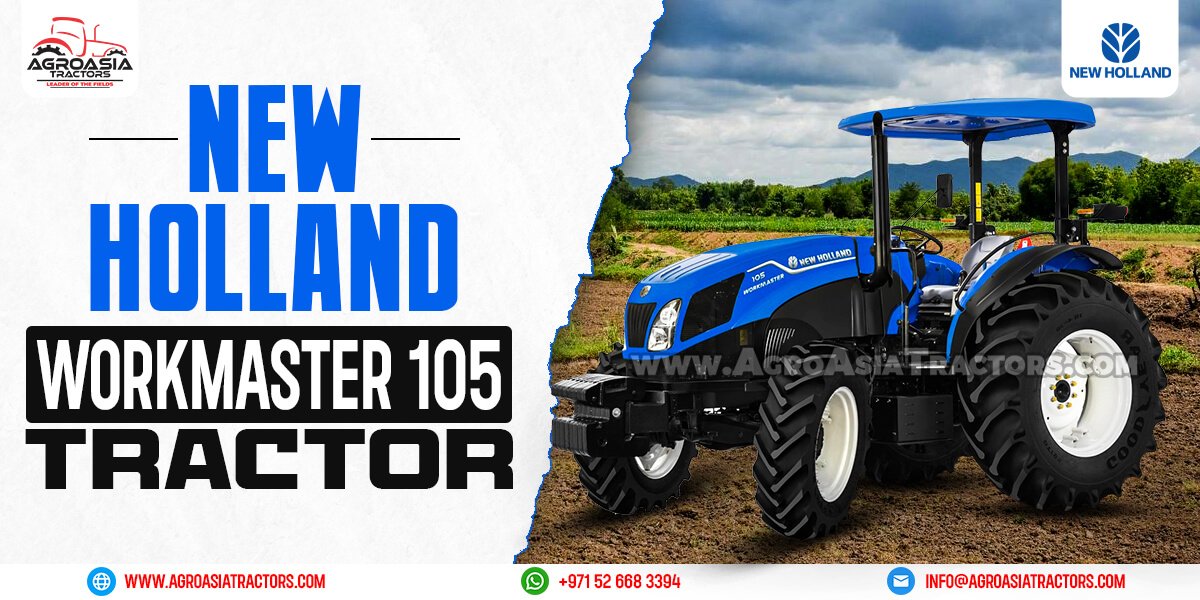Most Common Massey Ferguson 385 Tractor’s Problems & Solutions
If you’re a farmer or someone who deals with farm machinery, you’ve probably heard of the Massey Ferguson 385 Tractor. This tractor Model is known for its reliability and power, making it a favorite among many in the agricultural sector. Whether you are plowing fields, planting crops, or hauling heavy loads, the Massey Ferguson 385 can handle it all. Its robust build and efficient performance make it a valuable asset on any farm . However, even the best machines can encounter problems, and the Massey Ferguson 385 is no exception.
No doubt, brand new Massey Ferguson tractors have many strengths. However, like any piece of machinery, this Massey Ferguson model also has its fair share of issues. These problems can range from starting difficulties to more complex hydraulic and transmission issues. Farmers often face these challenges, which can disrupt their operations and cause unnecessary downtime. Understanding these common problems is the first step in preventing them from occurring and ensuring your tractor remains in top working condition.
This blog dives into the most common problems encountered with MF 385 2WD/ MF 385 4WD From starting issues, where the tractor struggles to turn on, especially in colder weather, to overheating problems that can cause significant damage if not addressed promptly, we cover it all. We also explore hydraulic system malfunctions that affect the performance of Farm implements and lifting capabilities, as well as transmission troubles that make gear shifting a hassle. Electrical issues that impact essential components like lights and gauges are also discussed in detail.
By understanding and addressing these common problems, you can significantly extend the life of your Massey Ferguson 385 tractor. Regular maintenance and timely repairs will keep it running efficiently, saving you time and money in the long run. So, whether you’re a seasoned farmer or new to the agricultural world, this blog provides valuable insights to help you maintain your tractor and keep your farming operations running smoothly.
- Starting Issues
Problem: Difficulty Starting, Especially in Cold Weather
Solution:
- Battery Check: Ensure the battery is fully charged and in good condition. Replace if necessary.
- Starter Motor: Inspect the starter motor for wear and tear. Repair or replace if faulty.
- Glow Plugs: Ensure the glow plugs are functioning correctly. Replace any faulty glow plugs.
- Fuel System: Check for blockages in the fuel lines and ensure the fuel filter is clean.

- Overheating
Problem: Engine Overheating
Solution:
- Coolant Levels: Check and top up the coolant levels
regularly. - Radiator: Ensure the radiator is clean and free from debris. Flush and clean if necessary.
- Thermostat: Test the thermostat to ensure it is opening and closing correctly. Replace if faulty.
- Water Pump: Inspect the water pump for any signs of leakage or damage. Replace if necessary.

- Hydraulic System Issues
Problem: Hydraulic System Not Functioning Properly
Solution:
- Hydraulic Fluid: Check the hydraulic fluid levels and top up if needed. Ensure you are using the correct type of fluid.
- Hydraulic Filters: Replace hydraulic filters regularly to prevent blockages.
- Hydraulic Lines: Inspect hydraulic lines for leaks or damage. Repair or replace any damaged lines.
- Hydraulic Pump: Test the hydraulic pump for proper operation. Replace if it is not generating sufficient pressure.

- Transmission Problems
Problem: Difficulty Shifting Gears or Unusual Noises
Solution:
- Transmission Fluid: Check the transmission fluid levels and quality. Replace if dirty or low.
- Clutch Adjustment: Ensure the clutch is properly adjusted. Adjust as necessary.
- Gear Linkage: Inspect the gear linkage for wear or damage. Repair or replace as needed.
- Transmission Bearings: Check for worn or damaged bearings. Replace if necessary.

- Electrical Issues
Problem: Electrical Components Not Working
Solution:
- Fuses: Check and replace any blown fuses.
- Wiring: Inspect the wiring harness for any signs of damage or corrosion. Repair or replace damaged wires.
- Alternator: Test the alternator to ensure it is charging the battery correctly. Replace if faulty.
- Connections: Ensure all electrical connections are clean
and secure.

- Fuel System Problems
Problem: Engine Stalling or Loss of Power
Solution:
- Fuel Filters: Replace the fuel filters regularly to prevent blockages.
- Fuel Lines: Inspect fuel lines for leaks or blockages. Clean or replace as necessary.
- Fuel Pump: Test the fuel pump for proper operation. Replace if it is not delivering fuel effectively.
- Injectors: Clean or replace fuel injectors if they are clogged or malfunctioning.

- Brake Issues
Problem: Ineffective Braking or Brake Failure
Solution:
- Brake Pads: Inspect the brake pads for wear and replace them if they are worn out.
- Brake Fluid: Check the brake fluid levels and top up if necessary.
- Brake Lines: Look for leaks or damage in the brake lines and repair or replace as needed.
- Brake Drums: Ensure the brake drums are clean and free from debris.

- PTO (Power Take-Off) Problems
Problem: PTO Not Engaging or Disengaging Properly
Solution:
- PTO Clutch: Check the PTO clutch for wear and adjust or replace it if necessary.
- PTO Shaft: Inspect the PTO shaft for damage or excessive wear and replace it if needed.
- PTO Control Linkage: Ensure the PTO control linkage is properly adjusted and functioning correctly.

- Steering Issues
Problem: Hard or Unresponsive Steering
Solution:
- Steering Fluid: Check and top up the steering fluid levels.
- Steering Linkages: Inspect the steering linkages for wear or damage and repair or replace as necessary.
- Power Steering Pump: Test the power steering pump for proper operation and replace it if it is not working correctly.
- Steering Gearbox: Ensure the steering gearbox is properly adjusted and free from leaks.


















![Year-End Sale Offers on Brand-New Tractors [2024]](https://www.agroasiatractors.com/wp-content/uploads/2024/11/END-YEAR-SALE-AGROASIA-TRACTORS.webp)




